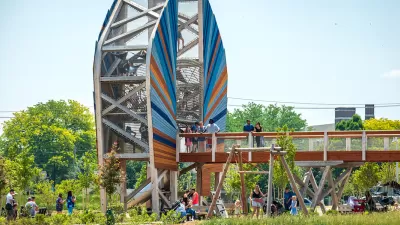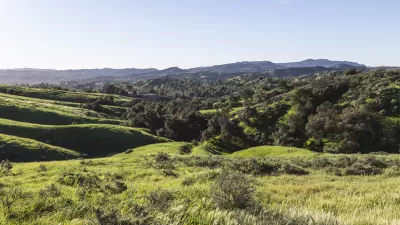With park finances increasingly determined by private fundraising efforts, New York's park system is beginning to reflect the city's growing inequality. Could a Neighborhood Parks Alliance help rebalance the city's park dichotomy?
As recent articles have noted, the budgets of New York City's 1,700 parks are increasingly determined by private sources. While a handful of parks are able to attract big money backers, "[t]he parks that find it hardest to attract support are in communities that need the open space most," laments Democratic state senator Daniel L. Squadron in a recent op-ed.
"When the advocacy group New Yorkers for Parks recently rated parks across the city, it was all too easy to predict which parks would be plagued by broken asphalt, damaged playgrounds and litter-strewn dirt — predominantly, those in neighborhoods without the private resources to maintain them."
Squadron proposes the creation of a Neighborhood Parks Alliance to help distribute scant resources more evenly throughout the city. According to Squadron, such an alliance "would form partnerships between a well-financed conservancy, a 'contributing park' and 'member parks' in need of more money and support."
"A Neighborhood Parks Alliance would not replace city financing, or the need for more of it. Nor would it create 1,700 Central Parks across every neighborhood in the city," he cautions. "But it would mean that more parks could meet their community’s needs, thanks to groups that have resources and knowledge worth sharing."
FULL STORY: Can a Tree Grow in the Bronx?

Alabama: Trump Terminates Settlements for Black Communities Harmed By Raw Sewage
Trump deemed the landmark civil rights agreement “illegal DEI and environmental justice policy.”

Planetizen Federal Action Tracker
A weekly monitor of how Trump’s orders and actions are impacting planners and planning in America.

The 120 Year Old Tiny Home Villages That Sheltered San Francisco’s Earthquake Refugees
More than a century ago, San Francisco mobilized to house thousands of residents displaced by the 1906 earthquake. Could their strategy offer a model for the present?

In Both Crashes and Crime, Public Transportation is Far Safer than Driving
Contrary to popular assumptions, public transportation has far lower crash and crime rates than automobile travel. For safer communities, improve and encourage transit travel.

Report: Zoning Reforms Should Complement Nashville’s Ambitious Transit Plan
Without reform, restrictive zoning codes will limit the impact of the city’s planned transit expansion and could exclude some of the residents who depend on transit the most.

Judge Orders Release of Frozen IRA, IIJA Funding
The decision is a victory for environmental groups who charged that freezing funds for critical infrastructure and disaster response programs caused “real and irreparable harm” to communities.
Urban Design for Planners 1: Software Tools
This six-course series explores essential urban design concepts using open source software and equips planners with the tools they need to participate fully in the urban design process.
Planning for Universal Design
Learn the tools for implementing Universal Design in planning regulations.
Clanton & Associates, Inc.
Jessamine County Fiscal Court
Institute for Housing and Urban Development Studies (IHS)
City of Grandview
Harvard GSD Executive Education
Toledo-Lucas County Plan Commissions
Salt Lake City
NYU Wagner Graduate School of Public Service





























